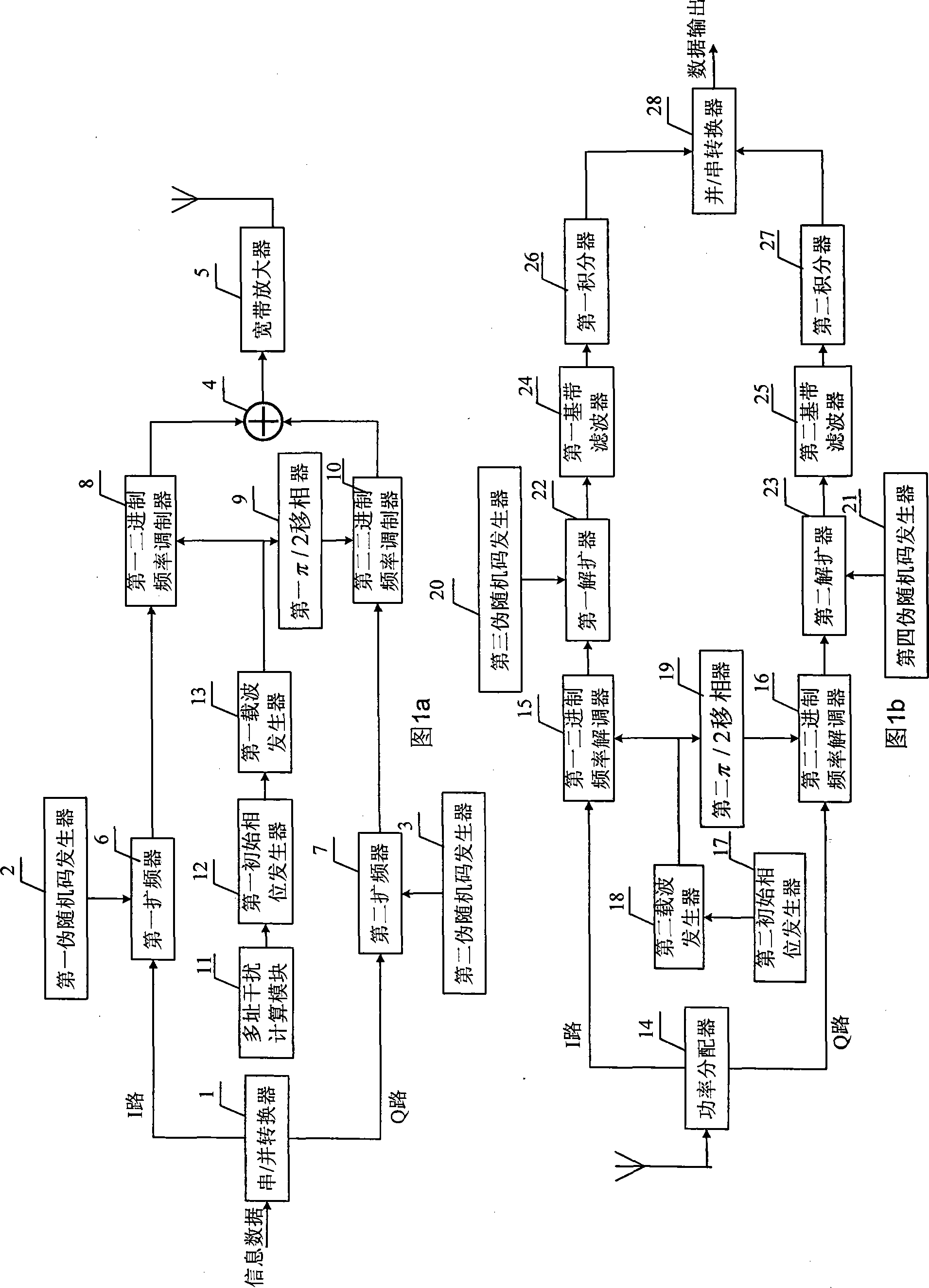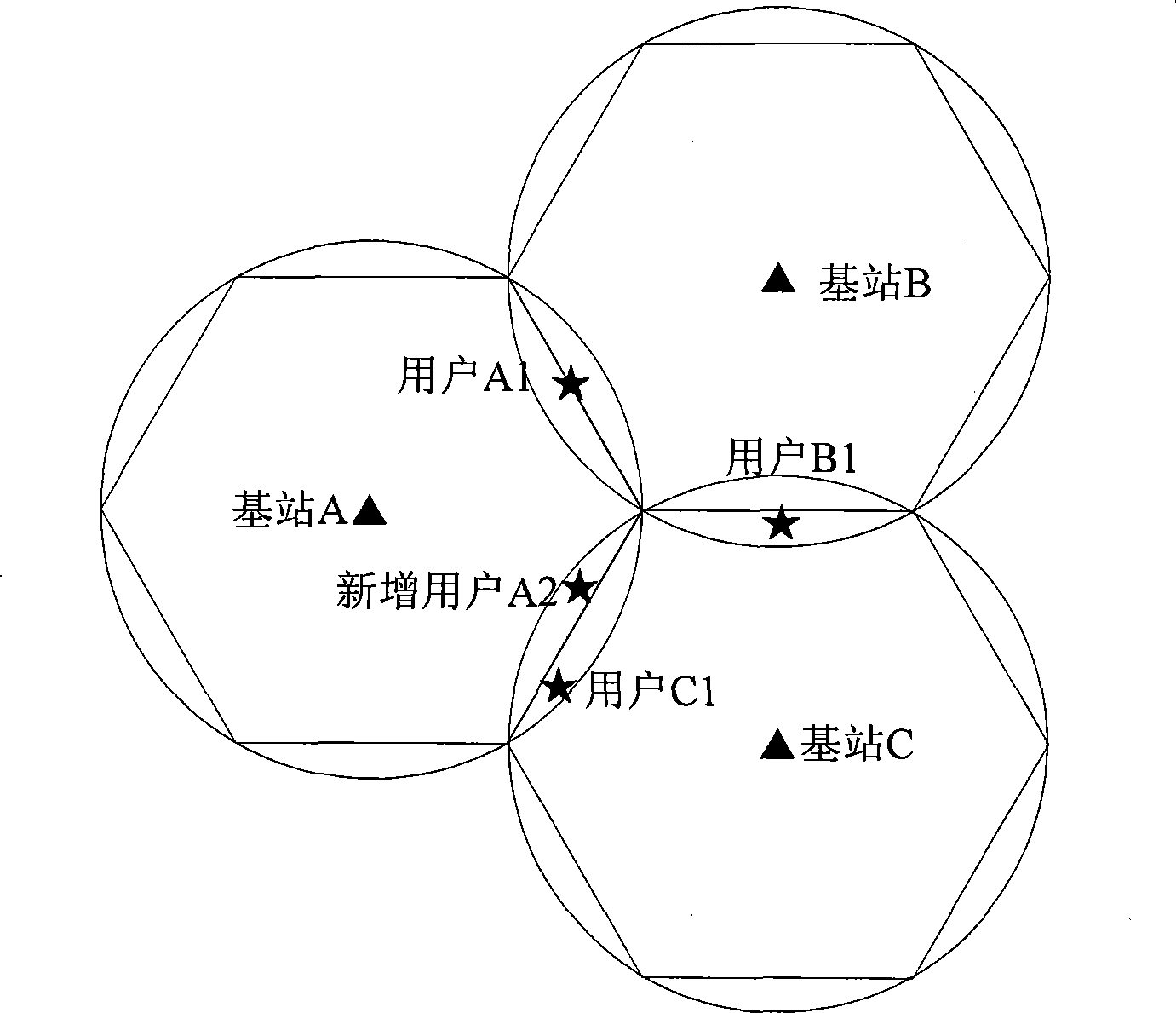Anti-multiaddress interfering direct sequence spread spectrum communication system
A direct sequence spread spectrum, communication system technology, applied in the field of direct sequence spread spectrum wireless communication, can solve the problems of newly added users unable to receive correct information, total interference value exceeding, and high multiple access interference
- Summary
- Abstract
- Description
- Claims
- Application Information
AI Technical Summary
Problems solved by technology
Method used
Image
Examples
specific Embodiment approach 1
[0030] Embodiment 1: This embodiment is described in conjunction with FIG. 1a and FIG. 1b. The transmitter of the anti-multiple access interference direct sequence spread spectrum communication system of this embodiment is composed of the following parts:
[0031] The serial / parallel converter 1 is used to divide the original information data into I and Q two-way signals, and send the two-way signals to the first frequency spreader 6 and the second frequency spreader 7 respectively;
[0032] The first frequency spreader 6 and the second frequency spreader 7 are used to spread the I and Q signals respectively, and send them to the first binary frequency modulator 8 and the second binary frequency modulator respectively 10;
[0033] The first pseudo-random code generator 2 and the second pseudo-random code generator 3 are used to generate different pseudo-random code sequences, which are sent to the first frequency spreader 6 and the second frequency spreader 7;
[0034] The mu...
specific Embodiment approach 2
[0052] Specific embodiment two: in conjunction with Fig. 1a, Fig. 1b and figure 2 This embodiment is described. In this embodiment, it is assumed that there are three users A1, B1, and C1 in the overlapping coverage area of the three base stations A, B, and C, and the users A1, B1, and C1 communicate with the three base stations A, B, and C respectively. At this time, user A2 joins, and A2 communicates with base station A. Calculate as follows by multiple access interference calculation module 11:
[0053] The signal transmitted by base station A to user A1 is:
[0054] S A1 (t)=S A1I (t)+S A1Q (t)
[0055] in
[0056] S A1I (t)=A 1 d A1I (t-τ A1I )PN A1I (t-τ A1I )cos(2πf c t+φ A1 )
[0057] S A1Q (t)=A 1 d A1Q (t-τ A1Q )PN A1Q (t-τ A1Q )sin(2πf c t+φ A1 )
[0058] S in the formula A1I (t) is the channel I signal of A1 user, S A1Q (t) is the Q channel signal of A1 user, A 1 is the magnitude, d A1I (t-τ A1I ) is the I road information data, d A1...
PUM
 Login to View More
Login to View More Abstract
Description
Claims
Application Information
 Login to View More
Login to View More - R&D
- Intellectual Property
- Life Sciences
- Materials
- Tech Scout
- Unparalleled Data Quality
- Higher Quality Content
- 60% Fewer Hallucinations
Browse by: Latest US Patents, China's latest patents, Technical Efficacy Thesaurus, Application Domain, Technology Topic, Popular Technical Reports.
© 2025 PatSnap. All rights reserved.Legal|Privacy policy|Modern Slavery Act Transparency Statement|Sitemap|About US| Contact US: help@patsnap.com



